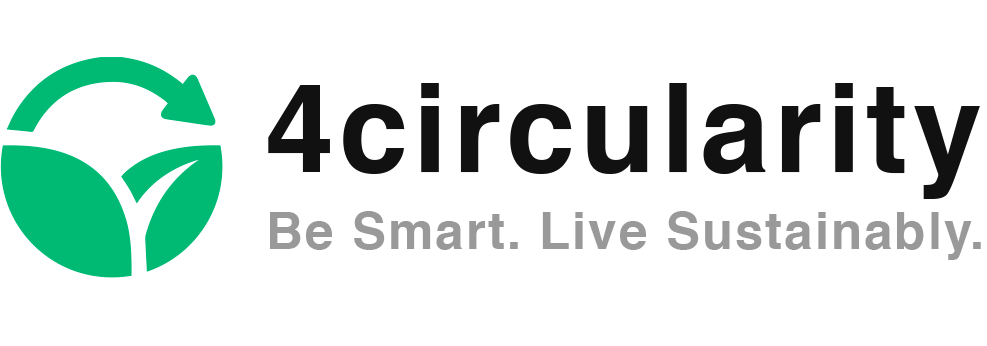What triggered me to write about confusion over business sustainability is the current situation we are living at this moment. Now, more than ever, taking care of the needs of the Mother Earth and ourselves has become the priority number one. The world is definitely changing and it is not going back to how it was.
For businesses this situation is controversial. On the one hand, they must guarantee the continuation of their processes. On the other hand, they are being pushed to change their operations to more sustainable patterns by achieving their ambitious sustainability goals and targets.
This has approved to cause confusion for businesses. What is more urgent? Is it keeping the business alive? Or is it achieving the sustainability goals and targets by plan? What if the business could achieve both challenges at the same time and be profitable and a good corporate citizen all at once? This is it! Sustainability is the new normal.
Setting the tone for sustainability

The term sustainability often gets swept aside as an abstract concept. Sustainability consist of a set of values that have a positive affect to the daily business operations both within the company and in the community at large.
Local and global communities consists of the civil society, humans, private sector and organisations. The Earth is continuously been taken for granted, even though it is a huge part of the community itself. It provides us land, water, air and elements. The “optimal conditions” to live in.
It is more important to think “what is that this entity or spirit wants to bring forth in its creation? rather than thinking what we, as humans, want to achieve with this business?”
Spirit of Design-podcast, 2019
Acknowledging the spirit in every living organism, the Earth, in the plants and in the natural resources we use.
Interacting and being open to the spirit of the business. Meaning that there is an intangible spirit or force attached to a business which provides tangible products that create a new, bigger perspective from which things are examined.
Because the spirit is something that cannot be touched or seen, it is the most hardest task for businesses to bring life. The spirit can be felt.
Spirit of Design-podcast, 2019
The Earth didn’t form in one day. Neither will the transformation from a profit-driven to a purpose-driven business strategy happen overnight. Taking the systemic shift, it creates confusion. Results, such as savings, cannot be seen immediately but after some years of consistent work and believing in the decisions made.
For a long time, businesses have been encouraged to build purpose into what they do. Often it is seen as an add-on. As a way to create extra value and making the company look more conscious having a better reputation among its stakeholders and the community. However, the more efficient way it to embed sustainability into the core of the business strategy. That results in risks elimination, sustained profitable growth, understanding the long-term mindset and improvement in reactivity in the rapidly changing world.
What makes a business successful?

Is running a sustainable business profitable? Many businesses struggle to find ways to make their operations profitable while embedding sustainability into their strategy. Nevertheless, sustainable business must be profitable otherwise no one will pay the bills. This is totally true. Time frame and perspective are changing in sustainable strategies. Profitability remains as an unchanged target but never again at the expense of nature and people.
GDP is no longer a sufficient metric
Gross Domestic Product (GDP) index, which is defined as “the monetary value of all finished goods and services produced within a country’s borders in a specific period.” The GDP grows at the same rate as the production of goods and services increase, consuming energy and raw materials and creating emissions in a fast speed. GDP has become an insufficient economic indicator.
It is positive if a business is conscious of its environmental impacts and aims at reducing inequalities. It is better if a business compensates its impacts. It is the best if a business set up its strategy on sustainable innovations tackling global problems.
How well sustainability is integrated into the strategy?

Once the business sustainability plan is successfully published, its not the time to tick that box from the bucket list and place feet on the table. Who is responsible of achieving the sustainability goals and targets? The answer to this question is: Everyone.
Every sustainability journey starts with a clear road map that lists a set of goals. Next step is to assign s sustainability champion or a team of champions who will act as sustainability ambassadors and share the message, best practices and answers to other colleagues’ questions. This is to make sure that everyone are engaged with the goals.
Achieving sustainability goals is not on the shoulders of a single person. Data is dispersed around the departments and much of it is required frequently for reporting and communication purposes. Supporting colleagues in both ways is important. Sustainability should be a natural part of everyone’s daily activities.
Looking out for improvements is also part of the sustainable business model and strategy. Businesses should do their part in reshaping the future and not just respond to it. Sustainable business making eliminates risks, sustains profitable growth, understands the long-term mindset and reacts efficiently to the rapidly changing world.
How to communicate about sustainability and avoid greenwashing?

When it comes to communicating about sustainability, the businesses are increasingly using different ESG ratings and GRI reports as part of their sustainability reporting and communications. The data to the ESG and GRI reports is collected from publicly available information about the company. Namely the data is from corporate sustainability reports, NGO statements, news and annual reports. As many as there are sustainability analysis and ratings, as many different methodologies they represent.
Sustainability ratings are necessary for companies to present their level of sustainability compared to others in the same industry. However, many ratings and analysis are hard to understand even for the companies themselves. The biggest users of ESG reports and ratings are banks and investors. They use the data to evaluate companies chances to build growth in the long-term and stay profitable in the times of the changing climate.
The ESG ratings and data providers lack comprehensive explanations of their used methodology that would allow for more transparency. Due to the fact that the sustainability ratings’ industry is not regulated or standardized, the evaluations vary largely between them. In addition to this, in many countries disclosing sustainability data and publishing annual sustainability reports is not yet mandatory. Large size companies makes an exception.
Consequently, there is a lot of space for solutions for better collecting, analyzing and presenting the companies’ sustainability goals and their achievement. Businesses struggle to provide coherent and up to date data in sustainability reports, probably due to the fact that proper tools are not available or the problem has not yet been identified.
A company that communicates transparently about the actions it has taken, what went well, what was positive and what didn’t go well, are becoming more and more common to find. Communicating about the failures actually increases credibility and improves reputation more than when hiding unsuccessful actions. Honesty builds trust and trust engages stakeholders. This apply to a coherent presentation of business sustainability goals as well.
Lastly
There is a huge paradigm of one-way relationship with the Mother Earth. We are taking, taking and taking all the time and not giving back. A one-way relationship like this is not fair and it won’t work for a long-term.
The Mother Earth shows up every single day for us.
We must stop just taking and taking, and start finding ways to renew and give back to the Earth.
One ambitious step at a time.


One Reply to “Confusion over business sustainability”